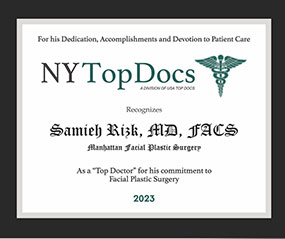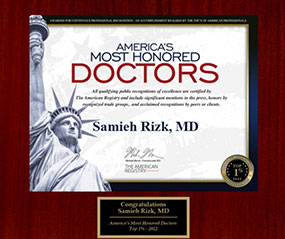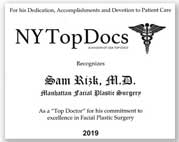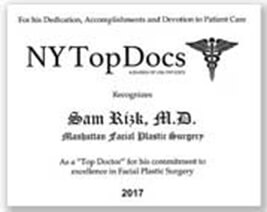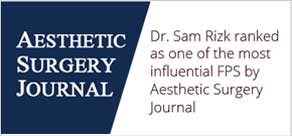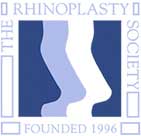Grafts in Rhinoplasty, Why Are They Used?
Rhinoplasty is not just about reshaping the nose; it’s about enhancing both form and function. For patients needing structural support or added definition, nasal grafts offer a way to create natural-looking, durable results. Dr. Sam Rizk, a double board-certified facial plastic surgeon renowned for his expertise in rhinoplasty, utilizes various grafts – from spreader to rib grafts – to provide solutions that cater to various needs.
What Is a Nose Graft?
A nose graft is a piece of material, such as cartilage or bone, taken from elsewhere on the body and used to shape or reinforce the nose. They can help provide additional support for weaker structures and increase the overall strength of the nasal framework.
Cartilage grafts can be taken from a variety of sources, including tissue banks and your own body. Options include septum cartilage in the nose, rib cartilage near the ribs/chest area, or ear cartilages – giving you plenty of choices for achieving results that look more natural.
In some cases, other materials such as a synthetic implant or fat may be used in place of cartilage. Although these materials can offer temporary results that may fade over time, they are often used in combination with cartilage grafts to provide more durable and long-lasting results.
Book a Rhinoplasty Consultation
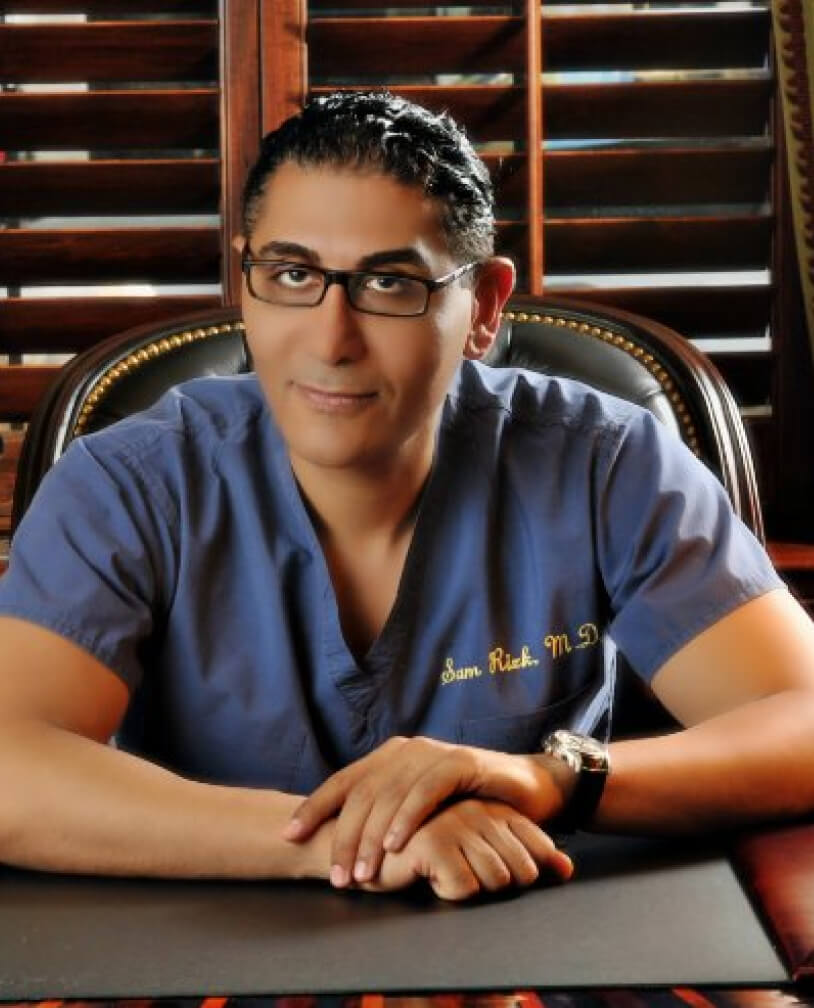
Meet Dr. Sam Rizk, Your Nasal Bone Graft Surgeon
Dr. Sam Rizk is a true master of facial and reconstructive surgery, having perfected thousands of highly complex rhinoplasties and facelifts to the highest degree imaginable – patients travel from all over the world for his renowned skills. His expertise, along with his patient-centered care has made him one of New York’s most sought after nose job specialists.
With his education in both aesthetics and plastic surgery, he is the perfect selection for those seeking advice about rhinoplasty or surgical operations on their face, eyes, and neck. His experience combines artistic expression with knowledge of medical techniques to guarantee you get the best possible results.
Learn More About Dr. RizkRhinoplasty Grafts Can Treat…
Grafts in rhinoplasty are used to achieve specific goals such as creating definition in thick skin noses, making a nose appear straighter, correcting a collapse or indentation in the nose, providing tip support to prevent the nose from drooping, or correcting a saddled (scooped) or pinched nose in revision rhinoplasty.
Nasal Bridge Augmentation
Nasal Bridge Augmentation is performed to enhance the profile of the nose by placing grafts along the dorsum, increasing height and creating a defined contour. Precise shaping and placement ensure a balanced, natural-looking result while improving nasal stability. It is particularly beneficial for individuals with a low nasal bridge, boosting facial harmony while maintaining natural functionality and structural integrity.
Tip Refinement
Tip refinement focuses on shaping the nasal tip, achieving a balanced, aesthetically pleasing profile. Dr. Rizk reshapes tip cartilage and carefully adjusts underlying support structures, paying close attention to each patient’s individual nasal anatomy. Grafting options vary, including cartilage from the septum or ear to ensure stability and contour. This precise approach elevates tip definition while preserving essential function and it is ideal for addressing bulbous, droopy, or asymmetrical tips.
Correcting Asymmetry
Correcting nasal asymmetry with rhinoplasty often involves careful graft placement and precise cartilage manipulation. Dr. Rizk evaluates imbalances in nasal structures, and then selectively reshapes or reinforces these areas to restore symmetry. Techniques may include reshaping the nasal tip, adjusting bridge height, or correcting nostril alignment. The ultimate goal is a harmonized nasal contour that complements overall facial proportions while preserving function.
Improving Breathing and Airflow
Improving breathing and airflow is a fundamental objective in functional rhinoplasty. Grafts and structural adjustments can correct collapsed or narrowed nasal passages, address septal deviation, or reinforce weakened cartilage. By restoring proper support to the nasal framework, patients can experience enhanced nasal function, increased comfort, and reduced breathing difficulties, while simultaneously benefiting from aesthetic improvements and improved overall nasal harmony.
Revision Rhinoplasty
Revision rhinoplasty addresses complications or dissatisfaction from previous surgery, typically requiring specialized techniques and grafts to restore function and aesthetic balance. Correction may involve scar tissue removal, structural reinforcement, or reshaping of cartilage. With careful planning and an experienced surgeon like Dr. Rizk, revision rhinoplasty can produce improved, lasting results, helping patients achieve their desired nasal contours and function.
Am I a Good Candidate for a NYC Cartilage Graft Nose Job?
Determining candidacy for nose grafting surgery hinges on factors like overall health, realistic expectations, and nasal anatomy. Here are the primary considerations to guide prospective patients toward a successful outcome.
- Nasal Concerns: Individuals with structural or aesthetic issues that affect appearance or breathing.
- General Health: Patients should be in good physical condition and able to undergo surgery safely.
- Realistic Goals: Clear, achievable objectives for improving nasal shape, symmetry, or function.
- Emotional Readiness: A positive mindset and understanding of potential outcomes and recovery.
- Surgeon Consultation: Professional evaluation from Dr. Rizk to determine personalized treatment and procedural suitability.
NYC’s Dr. Sam Rizk’s Innovative Approach to Nasal Grafts
Dr. Rizk is revolutionizing rhinoplasty with an innovative technique that yields neater, more discreet results. Dr. Rizk uses powered sanding tools, rather than a traditional scalpel, for an even smoother finish when sculpting each nose he operates on. This method produces curves that are less noticeable and more aesthetically pleasing! Dr. Rizk’s practice exceeds the standard of nose reshaping, as he takes extra precautions to place grafts deeply under the nasal muscle to provide additional support for those with thin skin.
Rhinoplasty Consultation
During a comprehensive pre-procedure consultation with Dr. Rizk, patients discuss their nasal goals, medical history, and expected outcomes. Dr. Rizk assesses the nose, explains graft options, and addresses any concerns.
Rhinoplasty Grafts Surgery
A grafts-based rhinoplasty with Dr. Rizk begins with a detailed consultation and advanced 3D imaging to align surgical goals with your aesthetic and functional needs. In the operating room, Dr. Rizk uses precise surgical techniques to harvest and shape grafts, which may be sourced from cartilage in the septum, ear, or ribs. These grafts are meticulously placed to reinforce nasal structure, improve airflow, and refine the nose’s appearance. Using endoscopic methods and minimal incisions, Dr. Rizk ensures accurate graft placement, seamless integration with existing tissue, and natural-looking results, all while minimizing recovery time with personalized post-operative care.
Recovery From Nasal Grafts
You’ll need to take 1-2 weeks off while swelling, bruising, and discharge from your nose naturally decrease. Dietary, exercise, and lifestyle restrictions will depend on the type of grafts used, however, it is important to follow all post-operative instructions in order to ensure a successful outcome. In general, patients going through cartilage graft sose recovery should avoid strenuous activities such as jogging and lifting weights during the first one to two weeks.
Types of Grafts in Rhinoplasty and Their Uses
There are several types of grafts that can be used in rhinoplasty, each with its own purpose. Grafts are placed with either the open (external) rhinoplasty approach or the endonasal (internal) closed rhinoplasty approach. The following are some of the more common grafts Dr. Rizk uses, but this list is by no means complete. In fact, some grafts used have no name.
Cartilage Graft Rhinoplasty
The most common type of graft used in rhinoplasty is a cartilage graft, which can be sourced either from the patient’s own body (autograft) or from another person (allograft). Cartilage grafts are typically used to increase nasal projection, reshape the nasal tip, and provide support for a collapsed or weak bridge.
Composite Graft or Ear Cartilage Graft
Composite graft combines skin and cartilage from the ear, providing both structural support and coverage for nasal defects. It is commonly used for reconstructing nostril rims, correcting alar retraction, and restoring natural contour and function.
Shield Graft
Used to fortify the nasal tip and achieve better projection and definition. It’s meticulously positioned in front of the tip cartilages, refining shape while preserving structural support.
Columellar Strut
Columellar strut is placed between the medial crura to strengthen nasal tip support and stabilize the columella. It helps maintain projection and refine tip shape and alignment.
Tip Onlay Graft
Tip onlay graft is placed over the nasal tip cartilages, enhancing definition and projection. Ear cartilage from the conchal area is an excellent option for a tip onlay graft.
Camouflage Graft
A type of onlay graft used to mask minor surface irregularities or prominent edges on the nasal framework. It helps create a smoother, more refined nasal contour while preserving function.
Caudal Extension Graft
Caudal extension graft is positioned at the nasal septum’s caudal end to lengthen and reinforce tip support. Harvested cartilage (often from the septum) helps achieve improved tip alignment, projection, and overall balance.
Spreader Graft Rhinoplasty
A spreader graft nose graft is used to widen a middle vault collapse and to correct an inverted V deformity. They are placed between the upper lateral cartilage and septum.
Alar Batten Graft
Used to support the external nasal valve and goes lateral to the lower lateral cartilages to correct a “pinched nasal tip”-used frequently in revision rhinoplasty. Helps prevent the collapse of the alar when breathing in.
Dorsal Augmentation Graft
Dorsal augmentation graft is applied along the nasal bridge to improve height and shape. Typically fashioned from cartilage, it helps correct contour irregularities and refine the nose’s overall profile.
Plumping Grafts
This is a graft placed at the nasolabial angle and is used to augment or improve a retracted columella. This graft can make the nose appear shorter.
Rib Graft Rhinoplasty
Rib graft rhinoplasty employs cartilage from the patient’s rib for robust support and augmentation. It is the last resource for revision cases, providing precise contouring and improved nasal function.
Radix Graft
This graft is placed in the angle between the nose and forehead (nasofrontal angle) to change the angle and make it look less deep. This makes the nose appear longer. Dr. Rizk likes to crush this graft made of cartilage to make it less visible and place it deep in the nasofrontal area under the muscle.
Alar Rim Graft
This graft is placed along the edge of the nostrils to also improve a pinched tip appearance or a retracted nostril. Dr. Rizk prefers to use soft ear (conchal) cartilage or septal cartilage for this graft.
What Are the 3 Sources of Rhinoplasty Grafts?
Rhinoplasty grafts are a critical aspect of surgical planning, providing essential structure and aesthetic refinement. These grafts can be harvested from three primary sources: septal cartilage, ear cartilage (conchal), and rib cartilage—each offering benefits regarding flexibility, support, and volume. Dr. Rizk chooses the optimal material to address both functional and cosmetic needs, ensuring natural, lasting results while consistently exceeding expectations.
Nasal Septum Graft
These grafts use cartilage from the nasal septum to provide structural support, correct deformities, and refine contours. They offer an ideal balance of firmness and flexibility, ensuring natural aesthetics and improved nasal function.
Ear Cartilage Graft
Ear cartilage grafts harvested from the conchal bowl provide natural curvature and flexibility. They enhance tip definition and structure while minimizing donor site morbidity, ensuring lasting outcomes.
Rib Cartilage Graft
Rib cartilage grafts, sourced from the patient’s rib, offer robust support and volume for complex or revision rhinoplasty cases. They are ideal when strong structural reinforcement is necessary for optimal nasal contour and function.
Cartilage Graft Rhinoplasty Risks
Cartilage graft rhinoplasty is generally safe, though potential risks include infection, delayed healing, graft warping or resorption, and donor site complications. However, Dr. Rizk’s expertise and comprehensive surgical techniques minimize these risks significantly. His extensive preoperative planning and precise execution ensure a smoother recovery and natural, lasting results.
Why Choose Dr. Sam Rizk for Rhinoplasty Grafts?
Dr. Sam Rizk, a double board-certified facial plastic surgeon in NYC, is globally recognized for his mastery in rhinoplasty and facial plastic surgery. With an unparalleled understanding of nasal anatomy and cutting-edge techniques, Dr. Rizk is dedicated to delivering results that balance form and function. His pioneering work in 3D High-Definition Rhinoplasty demonstrates his commitment to precision, faster recovery times, and exceptional patient outcomes. Whether addressing functional concerns, aesthetics, or complex revisions, Dr. Rizk combines artistry with advanced surgical methods to ensure natural-looking, lasting results tailored to each patient.
- Over 20 Years of Expertise: Extensive experience in graft-based, ethnic, and revision rhinoplasty.
- Exceptional Training: Fellowship-trained in facial plastic and reconstructive surgery with a background at prestigious institutions like Lenox Hill Hospital and Manhattan Eye, Ear & Throat Hospital.
- Award-Winning Reputation: Featured in The New York Times, Castle Connolly’s Top Doctors, and New York Magazine’s Best Doctors.
Uncover Your Natural Beauty Through Dr. Rizk’s Revolutionary Approach!
More on Rhinoplasty
- Teen Rhinoplasty
- Alar Base Reduction
- Drooping Nose
- Nasal Surgery Instructions
- Finesse Rhinoplasty
- Revision Rhinoplasty
- Skin Care After Rhinoplasty
- Ethnic Rhinoplasty
- Septoplasty & Sinus Surgery
- Nose Reconstruction After Skin Cancer
- Piezo Rhinoplasty
Before and After Graft by Dr. Rizk
Case #1
A woman in her forties had the courage to tackle a daunting and rare saddle deformity in her nose. Utilizing Dr. Rizk’s special microsurgical tools rather than a surgical blade, she was able to successfully reshape banked rib cartilage along with soft tissue from above the ear into something new – making it straight and free of any bumps. This courageous act has given this patient an incredibly beautiful finish that no doubt makes her feel empowered every day!
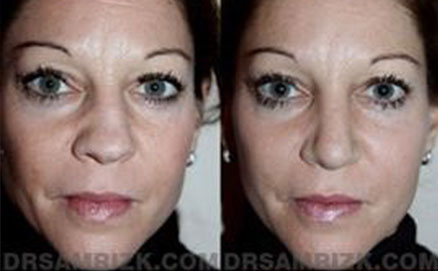
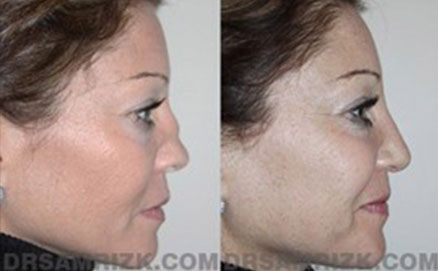
Case #2
A 44 year old female patient who underwent endonasal rhinoplasty to correct a collapse of the left nose secondary to an injury which also created a crooked nose to the right. Patient also wanted more tip refinement and a very subtle profile reduction. Patient had rhinoplasty endonasally in 3D with multiple nasal cartilage graft placements on the left side to correct the collapse, as well as a conservative profile reduction and tip refinement. The grafts were harvested from the patient’s own nasal septum.
*Results may vary.
See More ResultsFAQs
Are Cartilage Grafts Suitable for Everyone?
Cartilage grafts are suitable for most patients needing structural or aesthetic nasal improvements. However, suitability depends on individual anatomy, goals, and health. A consultation with Dr. Rizk is essential.
How Long Will the Results of Cartilage Graft Rhinoplasty Last?
Cartilage graft rhinoplasty results are generally long-lasting—often considered permanent with proper surgical technique and care. While natural aging may cause minor changes, the overall improvement endures.
Is Cartilage Removed During Rhinoplasty?
Cartilage is not always removed; surgeons primarily reshape and reposition it. In some cases, a small portion may be removed to achieve balance, ensuring optimal nasal function and natural aesthetics.
Dr. Rizk in the Media
Awards & Certifications

By Dr. Sam S. Rizk, M.D., FACS.
Dr. Rizk is a double board-certified facial plastic surgeon who specializes in rhinoplasty surgery and a recognized expert on the latest advances in facial plastic surgery techniques. He performs a range of facial plastic surgeries at his New York practice.

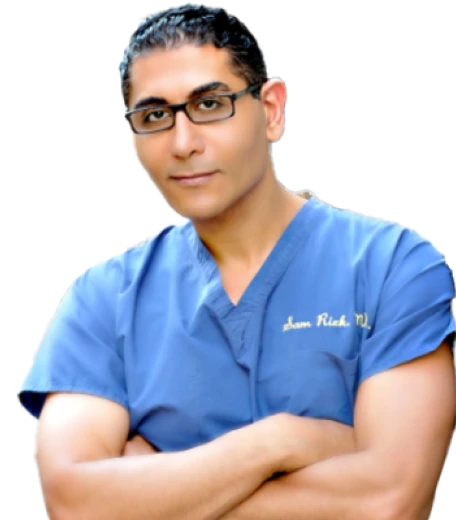
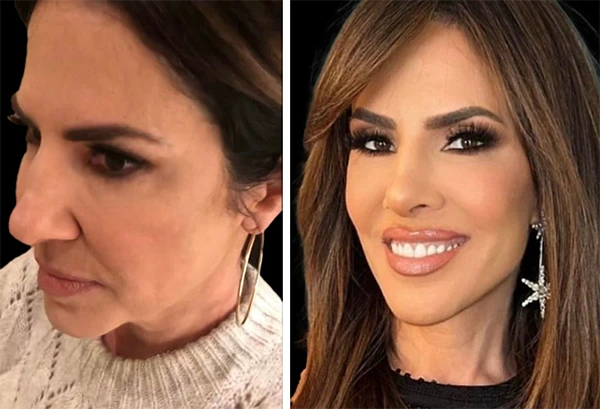
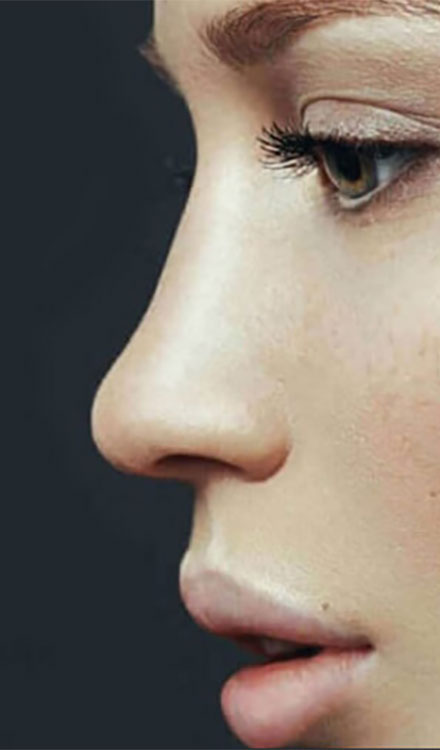

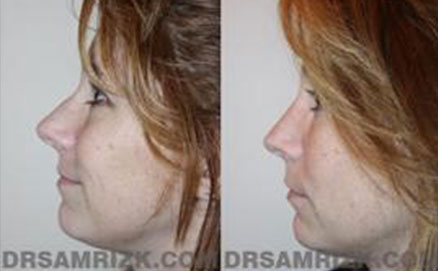
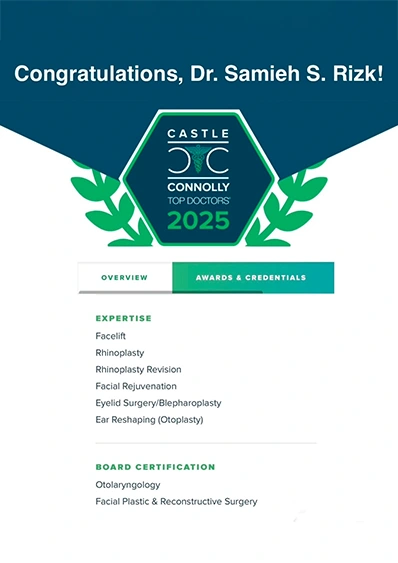
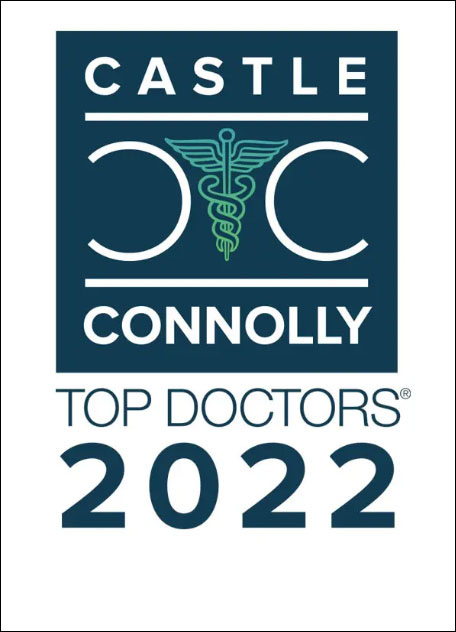
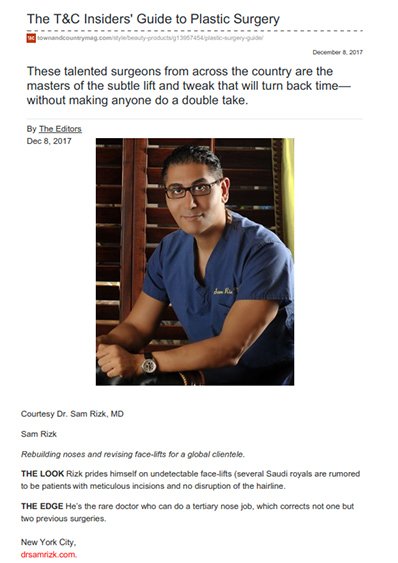

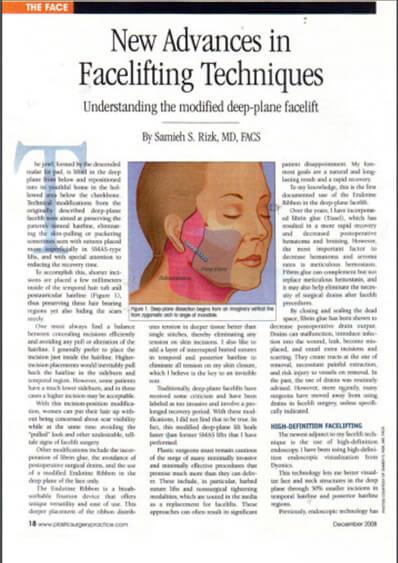


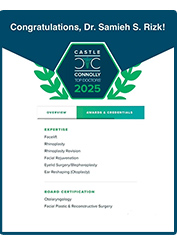
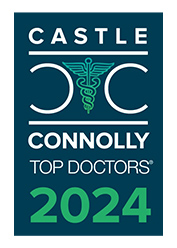

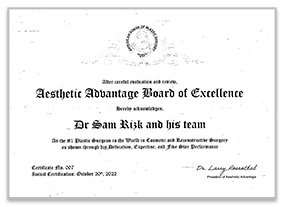
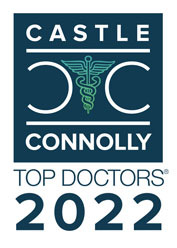

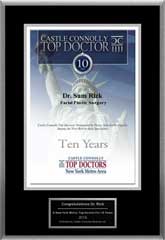
2.jpg)
